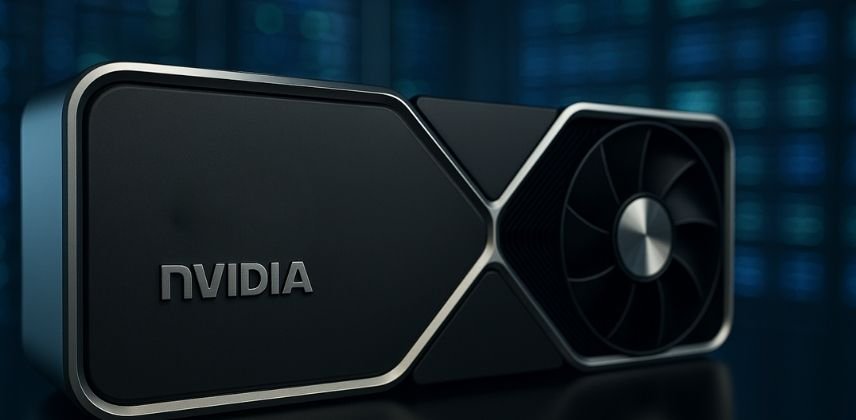NVIDIA Earnings Report 2025: Impact on Australian Businesses and the Future of AI
NVIDIA’s 2025 earnings report reveals major growth in AI, data centres, and GPU demand. Discover what this means for Australian businesses, technology adoption, and the evolving AI landscape.

NVIDIA’s latest earnings report for late 2025 has confirmed what many analysts suspected: demand for AI computing is still surging. The company reported record quarterly revenue driven mainly by its data centre and AI chip business, with data centre sales making up the clear majority of total revenue. This result sent the stock higher and eased some fears about an “AI bubble”.
For Australian businesses, this is not just a Wall Street headline. NVIDIA’s performance affects cloud pricing, AI tool availability, competition in local tech services, and the pace at which AI is adopted across industries such as finance, health, mining, education and retail.
Key Highlights From NVIDIA’s 2025 Earnings
While numbers shift slightly between quarters, the latest earnings report shows several clear trends:
- Quarterly revenue around the mid-tens of billions of US dollars, up strongly year on year.
- Data centre and AI chips contributing the vast majority of revenue, far more than gaming or consumer graphics.
- Guidance for the next quarter that is higher than analyst expectations, signalling continued demand for AI infrastructure.
- Management repeatedly emphasising that demand for its latest Blackwell-generation AI chips remains extremely strong across cloud providers and large AI platforms.
In other words, spending on AI hardware is not slowing down. NVIDIA continues to be at the centre of that ecosystem, supplying chips to hyperscale cloud providers, major AI labs and enterprise customers worldwide.
Why NVIDIA’s Earnings Matter To Australian Businesses
It is easy to assume that NVIDIA’s results only matter to investors, but the implications reach directly into the Australian market. Most AI tools, cloud platforms and modern analytics systems rely on NVIDIA hardware behind the scenes. When NVIDIA signals strong demand and higher guidance, it is effectively signalling that the global AI build-out is still accelerating.
For Australian organisations, this has several practical consequences:
- Cloud and AI services will keep expanding: Local access to powerful GPUs via AWS, Azure, Google Cloud and other providers is likely to improve as they invest in more NVIDIA chips.
- AI becomes more accessible to SMEs: As infrastructure scales, AI features inside SaaS tools (CRMs, ERPs, marketing platforms, accounting systems) become standard rather than premium extras.
- Competition in digital and IT services increases: Agencies and IT consultancies that adopt AI early will widen the gap between themselves and slower competitors.
The AI Data Centre Boom and Its Local Impact
NVIDIA’s earnings confirm that data centre revenue is the core growth driver. This reflects massive investment in AI clusters capable of training and running large language models, recommendation engines and computer vision systems.
For Australian businesses, the impact shows up in several ways:
- More AI features in everyday tools: From customer service chatbots to document summarisation and code assistants, many features are built on top of NVIDIA-powered infrastructure.
- Better performance and lower latency: As more regional data centres deploy advanced NVIDIA chips, Australian users see faster responses and more reliable AI applications.
- Growing demand for local skills: Data engineers, MLOps specialists and AI-literate developers are in higher demand as organisations try to make use of these capabilities rather than just read about them.
What NVIDIA’s Results Signal About the AI “Bubble” Debate
NVIDIA’s leadership has pushed back on the idea that AI is a short-term bubble, pointing instead to ongoing, broad-based demand from cloud providers, large enterprises and AI startups. The earnings numbers support that view for now: revenue growth remains strong, and guidance points upward.
For Australian businesses, this suggests that AI is not a passing fad but a structural shift similar to the arrival of the internet or smartphones. The key question is no longer “if” AI will reshape industries, but “how fast” and in which specific workflows it will first deliver the biggest gains.
Implications for Australian SMEs and Mid-Sized Companies
Many small and mid-sized Australian businesses still see AI as something only large enterprises can afford. NVIDIA’s earnings, however, tell a different story: most of the growth is coming from infrastructure that is being packaged into services ordinary businesses can access on demand.
Concrete implications for Australian SMEs include:
- More AI inside existing tools: Accounting, payroll, CRM, HR, marketing and inventory platforms will increasingly include AI assistance as standard features.
- Lower barrier to entry: Instead of building custom AI models, businesses can consume pre-built models through APIs and SaaS products priced per use.
- Need to review data readiness: To benefit from AI, businesses must organise and clean their data, update privacy policies and ensure they have permission to use customer data in AI workflows.
How Australian IT and Digital Agencies Can Respond
For Australian IT consultancies, agencies and managed service providers, NVIDIA’s 2025 earnings are both a signal and an opportunity. Clients will increasingly ask about AI, automation and data-driven decision making. Agencies that understand the AI stack and its costs will be better placed to advise and implement.
Key moves for service providers include:
- Building internal capability around cloud AI services that run on NVIDIA hardware.
- Creating packaged AI offerings such as AI-powered analytics dashboards, customer support bots or document automation solutions for specific industries.
- Helping clients manage cost and risk by choosing the right mix of on-premise, hybrid and cloud AI solutions.
Energy, Infrastructure and Sustainability Considerations
The growth reflected in NVIDIA’s earnings also has an energy and sustainability dimension. AI training and inference workloads are highly energy-intensive, and global concern is rising about the environmental impact of large data centres.
For Australian businesses, this may affect:
- Corporate sustainability reporting: Using AI services that depend on large data centres may need to be reflected in emissions and ESG reports.
- Vendor selection: Some organisations will prefer cloud and AI providers who can demonstrate efficient, lower-carbon NVIDIA-based infrastructure.
- On-premise vs cloud decisions: In some cases, highly efficient NVIDIA hardware deployed locally may be more predictable and controllable than shared public cloud resources.
What Australian Businesses Should Do Next
NVIDIA’s earnings report for 2025 is, in effect, a progress update on the global AI transformation. For Australian organisations, the most practical response is to translate this macro story into a concrete roadmap.
Steps to consider include:
- Review current use of AI in marketing, customer service, operations and analytics.
- Map which tools and platforms you already use that rely on NVIDIA-powered AI infrastructure.
- Identify two or three business processes that are repetitive and data-heavy, and explore whether off-the-shelf AI solutions can help.
- Work with IT partners or digital agencies who understand both AI capabilities and local regulatory requirements.
- Monitor future NVIDIA earnings and AI infrastructure announcements as a proxy for how quickly the ecosystem is moving.
Conclusion
NVIDIA’s 2025 earnings report confirms that AI infrastructure spending is still accelerating rather than slowing down. For Australian businesses, this is a signal to move from experimentation toward thoughtful adoption. Organisations that start aligning their data, workflows and talent with the AI-powered tools now emerging will be better positioned to compete in the second half of the decade.
Share
What's Your Reaction?
 Like
0
Like
0
 Dislike
0
Dislike
0
 Love
0
Love
0
 Funny
0
Funny
0
 Angry
0
Angry
0
 Sad
0
Sad
0
 Wow
0
Wow
0















